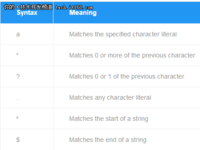【IT168 技术文档】C#调用Delphi接口方法,有两种解决办法:
一、将Delphi程序编译成一个COM组件,然后在C#里引用COM组件。
二、非托管调用Dephi的DLL文件。
这里我们主要讲解一下第二种方法,讲第二种方法之前首先讲解下DllImport。
DllImport是System.Runtime.InteropServices命名空间下的一个属性类,其功能是提供从非托管DLL导出的函数的必要调用信息。
DllImport属性应用于方法,要求最少要提供包含入口点的dll的名称。
DllImport的定义如下:
public class DllImportAttribute: System.Attribute
{
public DllImportAttribute(string dllName) {…} //定位参数为dllName
public CallingConvention CallingConvention; //入口点调用约定
public CharSet CharSet; //入口点采用的字符接
public string EntryPoint; //入口点名称
public bool ExactSpelling; //是否必须与指示的入口点拼写完全一致,默认false
public bool PreserveSig; //方法的签名是被保留还是被转换
public bool SetLastError; //FindLastError方法的返回值保存在这里
public string Value { get {…} }
}
上面DLL的名字有时需要写上路径的如[DllImport(@"C:\OJ\Bin\Judge.dll")]这样指定DLL的绝对路径就可以正常装载。
假如没有路径的话,DllImport会按照顺序自动去寻找的地方:
1、exe所在目录
2、System32目录
3、环境变量目录
所以只需要你把引用的DLL 拷贝到这三个目录下, 就可以不用写路径了。
说明:
1、DllImport只能放置在方法声明上。
2、DllImport具有单个定位参数:指定包含被导入方法的 dll 名称的 dllName 参数。
3、DllImport具有五个命名参数:
a、CallingConvention 参数指示入口点的调用约定。如果未指定 CallingConvention,则使用默认值 CallingConvention.Winapi。
b、CharSet 参数指示用在入口点中的字符集。如果未指定 CharSet,则使用默认值 CharSet.Auto。
c、EntryPoint 参数给出 dll 中入口点的名称。如果未指定 EntryPoint,则使用方法本身的名称。
d、ExactSpelling 参数指示 EntryPoint 是否必须与指示的入口点的拼写完全匹配。如果未指定 ExactSpelling,则使用默认值 false。
e、PreserveSig 参数指示方法的签名应当被保留还是被转换。当签名被转换时,它被转换为一个具有 HRESULT返回值和该返回值的一个名为 retval 的附加输出参数的签名。如果未指定 PreserveSig,则使用默认值 true。
f、SetLastError 参数指示方法是否保留 Win32"上一错误"。如果未指定 SetLastError,则使用默认值 false。
4、它是一次性属性类。
5、此外,用 DllImport 属性修饰的方法必须具有 extern 修饰符。
下面讲解下如何调用:
用DllImport来调用的 一般是用非托管的。
具体形式如下:1.[DllImport("WZFSE.dll", CharSet = CharSet.Ansi, CallingConvention = CallingConvention.StdCall)]。
其中第一个参数是指要引用DLL的名字, 这个名字应该是个常量(否则会出错)。
要想在自己C#页面中引用,那就得在页面中申明这个函数。
下面紧接着他的申明函数:
2.public static extern void InitDll(IntPtr handle, bool methodAddress);(Dephi里怎么定义的函数在C#这里就要怎么定义:即Dephi的申明函数转换成C#的声明函数)。
--申明一个函数就要引用下他的DLL 如1和2是紧密连在一起的。即再写一个函数就相应的应用起对应的DLL。
下面是参数的引用:即Delphi的类型向C#的转换。
第一个参数类型:IntPtr这个类型可以申明为其他语言的句柄,指针等。
若要实现其他语言类似C++的函数指针形式, 这时我们考虑用C#的委托来实现。
下面说一下:如何将Dephi的窗体显示在自己的页面中(且不能显示Delphi窗体的标题栏,实现无缝的结合)。
将dephi的窗体签入到自己的C#系统里 还有一点比较重要,我们是调用Delphi的窗体,此时显示在我们C#窗体中会有Delphi的窗体,
这时我们怎么办呢, 怎么去除Delphi中的窗体呢? 这时我们就需要用API函数了。 因为WINDOWS API是一种比较底层的语言,可以通过它进行操作。
在C#中是这么引用的: [DllImport("user32.dll", CharSet = CharSet.Ansi, CallingConvention = CallingConvention.StdCall)]
public static extern void MoveWindow(IntPtr handler, int x, int y, int width, int height, bool repaint);
下面插入一个类,这里面包含了怎么引用dephi的dll 以及怎么申明:
{
public static string strPath = "";
/// <summary>
/// 初始化
/// </summary>
/// <param name="handle"></param>
/// <param name="methodAddress"></param>
[DllImport("WZFSE.dll", CharSet = CharSet.Ansi, CallingConvention = CallingConvention.StdCall)]
public static extern void InitDll(IntPtr handle, bool methodAddress);
/// <summary>
/// 加载相应的服务
/// </summary>
/// <param name="str"></param>
/// <param name="str2"></param>
/// <param name="i"></param>
/// <returns></returns>
[DllImport("WZFSE.dll", CharSet = CharSet.Ansi, CallingConvention = CallingConvention.StdCall)]
public static extern IntPtr wzLoadModule(string str, string str2, int i);
/// <summary>
/// 去除相应的服务
/// </summary>
/// <param name="handle"></param>
/// <returns></returns>
[DllImport("WZFSE.dll", CharSet = CharSet.Ansi, CallingConvention = CallingConvention.StdCall)]
public static extern bool wzUnloadModule(IntPtr handle);
#region API函数
/// <summary>
/// API函数 设置主辅窗体
/// </summary>
/// <param name="child"></param>
/// <param name="parent"></param>
[DllImport("user32.dll", CharSet = CharSet.Ansi, CallingConvention = CallingConvention.StdCall)]
public static extern void SetParent(IntPtr child, IntPtr parent);
/// <summary>
/// API函数 移动窗体
/// </summary>
/// <param name="handler"></param>
/// <param name="x"></param>
/// <param name="y"></param>
/// <param name="width"></param>
/// <param name="height"></param>
/// <param name="repaint"></param>
[DllImport("user32.dll", CharSet = CharSet.Ansi, CallingConvention = CallingConvention.StdCall)]
public static extern void MoveWindow(IntPtr handler, int x, int y, int width, int height, bool repaint);
[DllImport("user32.dll", EntryPoint = "GetWindowLong")]
public static extern long GetWindowLong(IntPtr hwnd, int nIndex);
/// <summary>
/// API函数 去除窗体的标题栏
/// </summary>
/// <param name="hwnd"></param>
/// <param name="nIndex"></param>
/// <param name="dwNewLong"></param>
/// <returns></returns>
[DllImport("user32.dll", EntryPoint = "SetWindowLong")]
public static extern long SetWindowLong(IntPtr hwnd, int nIndex, long dwNewLong);
public const int GWL_EXSTYLE = -16;
public const int WS_EX_TRANSPARENT = 0x20;
public const int WS_EX_LAYERED = 0x80000;
public const int LWA_ALPHA = 2;
public const int WS_CAPTION = 0xC00000;
#endregion
}
其中API中的SetWindowLong这个方法是可以实现去除窗体的标题栏的, 具体调用SetWindowLong(common.p, GWL_EXSTYLE, GetWindowLong(handle, GWL_EXSTYLE) & (~WS_CAPTION));
但一般完整利用API函数的调用是这样的
InitDll(this.Handle, de1(this.Handle));//初始化
IntPtr p = wzLoadModule("DoRiskSetup", "", 0);//取得句柄
if (p != (IntPtr)0)//判断该句柄不是弹出窗体时
{
//去除dephi窗体的标题栏
SetParent(p, panel1.Handle);
SetWindowLong(p, GWL_EXSTYLE, GetWindowLong(p, GWL_EXSTYLE) & (~WS_CAPTION));
MoveWindow(p, 0, 0, panel1.ClientSize.Width, panel1.ClientSize.Height, false);
}
SetWindowLong(IntPtr handle, int t,long l) 第一个参数为句柄,是你调的dephi窗体的句柄,第二个参数为整型,在dephi用常量GWL_EXSTYLE表示,表示要显示的样式,在C#中翻译过来的他值为(-16),而第三个函则为长整型和第二个参数一起表示要去除第一个参数句柄窗体的标题栏在Delphi中表示为:GetWindowLong(handle,GWL_EXSTYLE) and (not WS_CAPTION) 在C#中则翻译为:GetWindowLong(handle,-16)&(~0xC00000),handle是指要调用的Delphi窗体的句柄,GetWindowLong这个函数是获得该窗体的相关信息。大体上是这个用法,如有不懂大家可以提出来 共同探讨。
一般类型对应如下:
Dephi-->C#
intger -->int
longint -->long
pchar -->string
THandle -->IntPtr

上图为C#窗体调用的Delphi的情况。
注:上面的dll的名称只是个例子 具体还要看你要引用哪个dll API中的函数在C#中是这样引用的

















